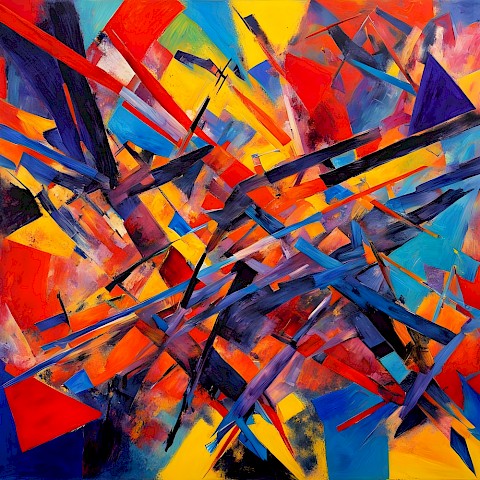|
08 IX 2025 |
14. Exhibited Oil Paintings 1830-50
527 - The Hero of a Hundred Fights | |

| ||
|
Exhibited in 1847 with the following explanation, attributed rather oddly to the Fallacies of Hope: 'An idea suggested by the German invocation upon casting the bell: in England called tapping the furnace.' The scene is the casting of M. C. Wyatt's bronze equestrian statue of the Duke of Wellington which had occurred in September 1845, but was superimposed by Turner on a much earlier picture of an interior with large pieces of machinery, akin to though not identical with the drawing of the interior of a belfry in the 'Swans' sketchbook of c.1798 (T.B.XLII-60 and 61). The original painting must have been done in the first decade of the century. When Turner came to rework it he left much of the original untouched, adding the great burst of light on the left and highlighting the still-life in the foreground. This was Turner's only exhibit in 1847, but the following year he was even more hard-pressed, exhibiting nothing at all; in 1849 he sent in two early pictures, 'Venus and Adonis' (No.78) and "The Wreck Buoy' which he repainted all over (Walker Art Gallery, Liverpool; repr. Rothenstein and Butlin 1960, pl.126). One suspects that most of the work on 'The Hero of a Hundred Fights' was done on the Varnishing Days. That he was there is known from his having touched in a portion of the rainbow of Maclise's 'Sacrifice of Noah' (see No.B64) which hung next to it, causing Ruskin to complain in a letter to Clarkson Stanfield, commiserating with him over the poor position of one of his exhibits, that 'They have served Turner worse, however; there is nothing in his picture but even colour, and they must needs put Maclise's rainbow side by side with it - which takes part - and a very awkward and conclusive part too in its best melody'. The Literary Gazette for 8 May 1847 thought the opposite however, saying that the Turner was 'painted up to such a blaze as to extinguish Noah's rainbow. It is a marvellous piece of colouring. If Turner had been Phaeton, he must have succeeded in driving the chariot of the sun'. Other reviews were less favourable. 'Fantastical absurdity' and 'dazzling obscurity', exclaimed the Spectator on 8 May, adding, on 19 June, that 'As a "vision". ', it is a burlesque on poetic licence.' 'Full of fine passages of chromatic arrangement,' said the Athenaeun for 8 May, 'it has so little foundation in fact that the sense is merely bewildered at the unsparing hand with which the painter has spread forth the glories of his palette.' Amazingly no one seems to have noticed the stylistic dichotomy between the original painting and the superimposed glow that so dazzled them. An image generated by an AI Machine Learning Model Property of the artist. | ||
